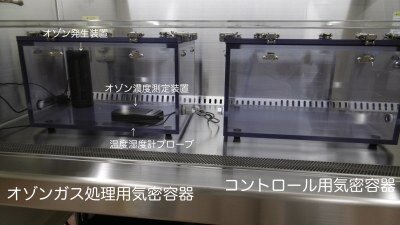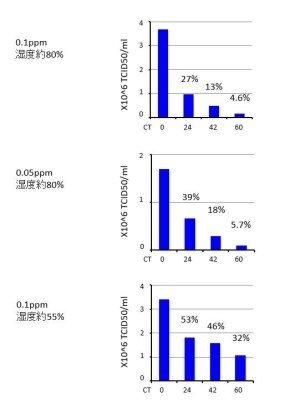A research group of Professor Takayuki Murata (virus / parasitology) at Fujita Medical University (98, Taragakubo, Kutsukake-cho, Toyoake-shi, Aichi) have conducted an experiment to eliminate Covid-19 even at low concentrations (0.05 or 0.1 ppm) of ozone gas. Experimentally, they have clarified that there is a decontaminating effect to the world.
Due to this discovery, even in places where people gather, such as medical facilities and public transport, it is possible to protect the new coronavirus infection with an ozone generator (a device that can maintain a low concentration and adequate concentration control) at a concentration acceptable to the human body at all times. At the Fujita Medical University Hospital, efforts to reduce the risk of infection in hospital shelters, hospital rooms, etc., will begin from the beginning of September 2020 by using an ozone generator already installed.
Research background
Ozone gas is known to have the effect of inactivating many pathogens and has already been reported to have an effect on the new coronavirus. However, in the experiment reported above, ozone gas with a high concentration of 1.0 to 6.0 ppm was used and there was concern about toxicity to the human body.
This time, Professor Murata's research group has revealed that ozone gas has a decontaminating effect on Covid-19, even at low concentrations (experienced at 0.05 and 0.1 ppm) that are acceptable to the human body, basic evidence to control and prevent the spread of infection.
Experimental methods and materials
- The novel coronavirus virus solution is attached to a stainless steel support, dried, and placed in an airtight acrylic container. An ozone gas generator, an ozone gas concentration measuring device, a thermometer and a hygrometer are placed in the hermetic container; the system treats the carrier to which the virus has adhered with ozone gas up to a predetermined time of 0.05 or 0.1 ppm. Exposure to ozone is based on the CT value, which is cumulative concentration (ppm) and time (minutes).
- Once the treatment is completed, the virus adhered to the stainless steel is suspended in the culture solution and collected. Furthermore, the recovered virus suspension is appropriately diluted to infect VeroE6 / TMPRSS2 cells and the index called tissue culture infectious dose 50 (TCID50) is calculated. TCID50 is an infectious viral load index. Two or three independent tests were carried out under the same conditions and the mean value was taken.
* The VeroE6 / TMPRSS2 cells were obtained from the Cell Bank of the Japan Collection of Research Bioresources (JCRB). As for the virus, the new coronavirus, which was transferred from the Kanagawa Prefectural Institute of Public Health after undergoing formal procedures, was amplified in VeroE6 / TMPRSS2 cells and used in the experiment.
* All experiments were carried out in the Biosafety Level 3 (BSL3) experimental facility at Fujita Medical University.

The graph on the right shows the average value of TCID50 for each environment where the humidity is 80% and 55%.
At 80% humidity, virus infectivity was reduced to 4.6% with CT60 (after 10 hours) even with 0.1 ppm ozone gas treatment, which is the Japanese standard for work environments. The stricter US Food and Drug Administration standards of 0.05 ppm ozone gas reduced the infectivity of the virus by 5.7%.
When the humidity was 55%, the ozone gas decontamination effect was weakened, but with 0.1 ppm ozone gas treatment, the infectivity was halved to 53% with CT24 (4 hours later).

Consideration
Experiments have shown that even a concentration of ozone gas that is harmless to the human body has the effect of suppressing the infectivity of the new coronavirus.
Read the original report:
 UNIVERSIDAD DE SALUD DE FUJITA
UNIVERSIDAD DE SALUD DE FUJITA









